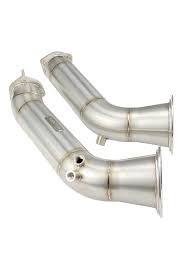There’s something kind of therapeutic about sitting down and talking cars without any rush or agenda — almost like the automotive version of a long walk. You start with one idea, wander into another, maybe ramble a little, but that’s the charm. And lately, I’ve found myself drifting into conversations about how modern performance cars respond to small tweaks. Not the flashy stuff. Just those subtle adjustments that somehow make the car feel more honest, more awake, more “you.”
Mercedes-AMG models tend to inspire this sort of wandering discussion. They have a personality that’s both refined and mischievous, like someone who shows up to a formal dinner with a hidden tattoo. You can drive them politely all week, but the moment the road stretches out and you’ve got a little space to breathe, they reveal this deeper, almost impulsive side — that sudden push of torque, the burble on downshift, the way the steering tightens when you didn’t even ask. It’s addictive.
Somewhere in that mix of curiosity and mechanical wonder, people start exploring the idea of tuning. Not necessarily big, wild changes — more like nudging the car closer to the version it seems capable of being. And one upgrade that comes up, almost casually but consistently, is the downpipe. Not glamorous at first glance, and definitely not a part most people think about… until they do.
The GT63, for example, is already a brute — a well-dressed, smooth-talking brute, but still a brute. Yet, owners often say the car feels strangely “held back,” almost like someone with a powerful singing voice whispering into the mic. That's where mercedes gt63 downpipes tend to enter the conversation. Not because of some flashy promise or overnight transformation, but because they let the engine exhale properly. Turbo engines love efficient airflow, and as simple as it sounds, the difference shows up in sound, throttle response, and even that quiet satisfaction you get when a car finally moves the way you sensed it could.
What I enjoy about speaking with GT63 owners is how surprisingly reasonable they are. They’re not chasing a race car. They’re chasing refinement — the kind of change you feel in your chest rather than measure on a chart. You hear phrases like “feels smoother” or “sounds fuller” far more often than “I gained exactly X horsepower.” And honestly, that’s refreshing. Tuning doesn’t have to be a science experiment. Sometimes it’s just… enhancing the vibe.
Now, shift that lens over to the E53 AMG, and the story twists a little. The E53 crowd tends to be a blend of daily drivers and casual thrill-seekers — people who appreciate performance but don’t necessarily want to live at the edge of it. The inline-six with hybrid assist is a unique creature: efficient, well-mannered, but capable of surprising people who underestimate it.
It’s in this softer, more balanced corner of AMG culture that downpipe mercedes e53 amg discussions quietly surface. Owners often describe the factory setup as “polite,” which is another way of saying it hides its potential a bit too well. A downpipe swap doesn’t turn the E53 into something it’s not — it just sharpens its voice. The turbos spool with more intention, the car’s tone grows a shade deeper, and the driving experience gains a little more personality. The kind of upgrade where you notice the change the moment you start the engine, even if you didn’t think you’d care that much.
It’s funny how both cars — the GT63, big and bold, and the E53, composed and clever — benefit from essentially the same category of upgrade, yet for completely different emotional reasons. That’s the thing with performance mods: the part may be the same, but the feeling isn’t.
What I find most relatable is how every owner describes their car after the change with this almost relieved tone. Like the car finally aligns with their expectations instead of hinting at performance it isn’t quite delivering. You don’t need to be a mechanic to understand the satisfaction of something working the way it always should’ve.
Of course, navigating the world of aftermarket parts can feel like a maze. You’ve got brands arguing with each other, forums full of half-truths and strong opinions, and videos comparing cold starts like it’s a competitive sport. It’s easy to overthink it. But the truth is usually much simpler: if you want better flow, a happier turbo, and an exhaust note that doesn’t sound like it’s trying too hard, a downpipe is one of the most “efficiently satisfying” mods you can pick.
And there’s something charming about how understated the change is. No wild body kits, no ridiculous wings, no drama. Just a quiet mechanical improvement that most people will never see — but you will feel. It’s like buying new running shoes that happen to make you love running again. Nobody else notices, but your entire experience shifts.
Even the way the car accelerates changes in this subtle, almost textural sense. You get a smoother pull, a quicker breath between gears, a hint more confidence when merging. Not earth-shattering, not headline-grabbing — just more enjoyable. And if driving is a daily ritual, enjoyment matters.
The funny thing is, after a while, people forget they even upgraded the car. It becomes the new normal. They only remember it when they drive a stock version again and feel that tiny bit of hesitation, that slightly muted tone, that almost imperceptible lack of urgency. That’s when they realize just how much one small change influenced the personality of the machine.

